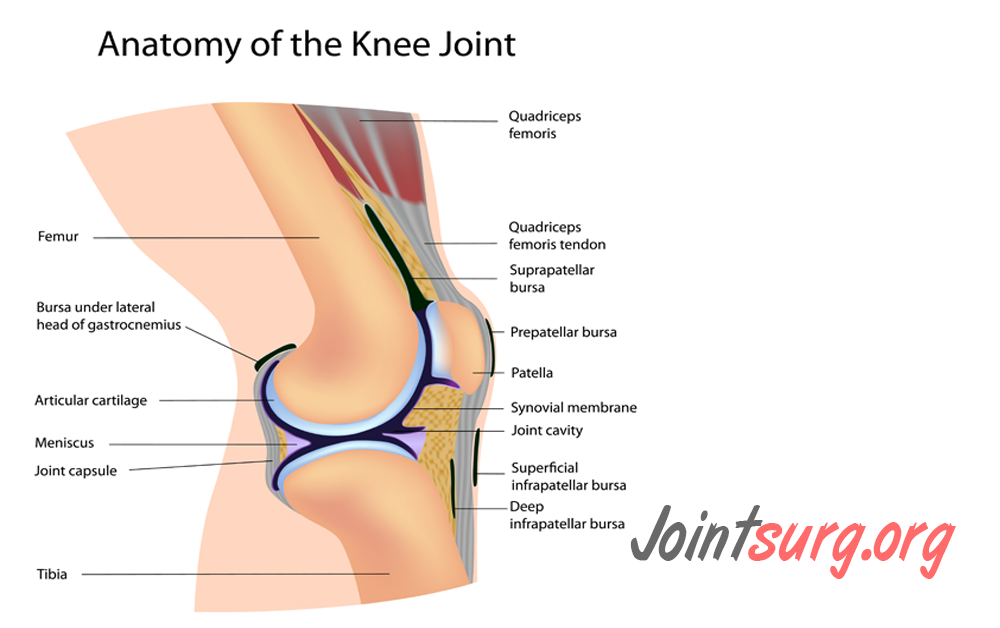The meeting point between two parts of an object is a joint. In the human body, this meeting point is between two bones.
What types of joints are in the human body?
The type of tissue present and the range of motion determine the joints’ two classifications.
Classification according to the type of tissue:
- •Fibrous – Fibrous tissue connects the bones. Fibrous joints are immovable.
- Cartilaginous – Cartilaginous is a term used to describe bones linked by cartilage. Cartilaginous joints have some movement, and synovial joints have free motion within anatomical pathways.
- Synovial – Articulating surfaces that are encased within a joint capsule that is filled with fluid.
Classification based on the range of motion:
- Synarthrosis — A condition that is unmovable.
- Amphiarthrosis —It is possible to shift the amphiarthrosis a little bit.
- Diarthrosis – the ability to move freely.
Fibrous Joints
A tough fibrous tissue holds the bones together in a fibrous joint.
Most of the time, they are joints that demand strength and stability throughout their range of motion.
Sutures, gomphoses, and syndesmoses are all fibrous joints that can be further subdivided.
Sutures
In the skull, sutures are immovable joints (synarthrosis), and they are located solely between the plates of the skull, which are flat and plate-like in shape.
They have limited movement until they are roughly 20 years old, after which they become motionless and fixed. They are particularly crucial during birth because the joints have not yet cemented together, allowing the skull to deform as it passes through the birth canal at that time.
Gomphoses
Gomphoses are also considered to be immovable joints. They can be found in the areas where the teeth articulate with their sockets in the maxilla (upper teeth) or the mandible (lower teeth), respectively (lower teeth).
The periodontal ligament, which is extremely strong, holds the tooth in its socket.
Syndesmoses
Syndesmoses are joints that are only minimally moveable (amphiarthroses).
They are composed of bones kept together by a membrane known as the interosseous membrane. Syndesmosis joints include the middle radioulnar joint and the middle tibiofibular joint, to mention a few.
Cartilaginous
In a cartilaginous joint, the bones are joined together by fibrocartilage or hyaline cartilage, depending on the kind of cartilage.
Synchondroses (primary cartilaginous) and symphyses (secondary cartilaginous) are the two most common forms (secondary cartilaginous).
Synchondroses
A synchondrosis is when the bones are joined by hyaline cartilage. These joints are not able to be moved (synarthrosis).
A synchondrosis is a joint between the diaphysis and epiphysis of a growing long bone, an example of synchondrosis.
Symphyses
Symphysial joints are the points at which the bones are joined together by a layer of fibrocartilage (connective tissue). They have a small amount of movement (amphiarthrosis).
The pubic symphysis and the joints between the vertebral bodies are examples of such structures.
Synovial
In order to be classified as a synovial joint, there must be a fluid-filled joint cavity encased within a fibrous capsule present.
They are the most frequent form of the joint present in the body and are characterized by their ability to move freely (diarthrosis).
The articular surface of the joints and their range of motions form the bases of various synovial joint classifications.
Much of the movement-related joint damage occurs in the synovial joints when they are forced into motions outside of anatomical pathways.
- Hinge – Hige joint allows movement in a single plane – often flexion and extension – of the joint. For example, the elbow joint, the ankle joint, and the knee joint.
- Saddle – Saddle Joint resembles the saddle on a horse’s back. It is distinguished by the presence of opposing articular surfaces with a reciprocal concave-convex shape in opposition to one another. For example, carpometacarpal joints.
- Plane – Plane joints have t relatively flat articular surfaces, allowing the bones to glide over one another. For example, the acromioclavicular joint and the subtalar joint.
- Pivot – The ability to pivot and rotate marks this most basic joint function. Examples include the proximal and distal radioulnar joints, as well as the atlantoaxial junction.
- Condyloid – A structure with a convex surface that articulates with an oval hollow that is concave. They are also referred to as ellipsoid joints in some circles. Examples are the wrist joint, the metacarpophalangeal joint, and the metatarsophalangeal joint.
- Ball and Socket – When the round ball-shaped end of a bone sits within a deep or shallow hallow cup-like area, a ball and socket joint is formed. The shallow ball and socket joint of the shoulder allow unrestricted movement along several axes. The hip joint provides similar freedom of movement to a lesser degree due to the depth of the hip socket.


